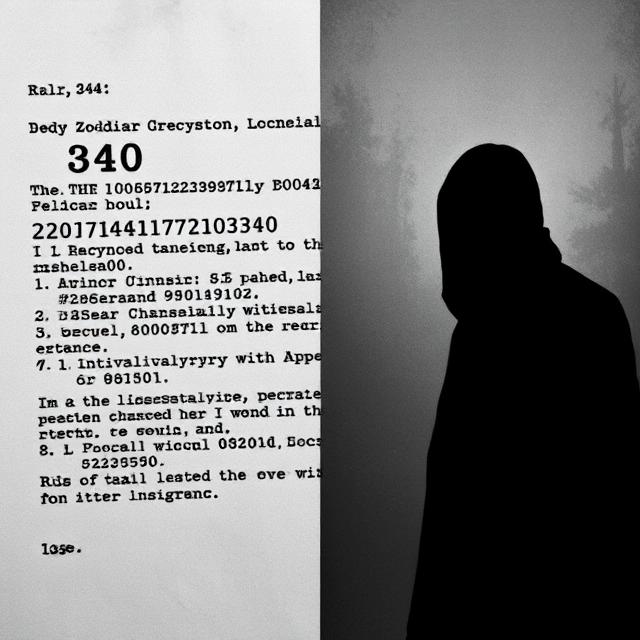In the stark, arid landscape west of Albuquerque, New Mexico, a chilling discovery in early 2009 unearthed a horrific crime scene that continues to baffle investigators and haunt the community. Over several months, the skeletal remains of eleven women and one unborn child were found buried in a 100-acre area on West Mesa. These women, many of whom had histories of drug addiction and prostitution, had gone missing between 2001 and 2005. The methodical way their bodies were concealed suggested a calculated killer, dubbed the “West Mesa Bone Collector” by the media. Despite years of investigation, the identity of this potential serial killer remains unknown, leaving behind a trail of grief, unanswered questions, and a chilling reminder of the vulnerability of marginalized individuals.
The first set of remains was discovered on February 2, 2009, by a woman walking her dog. Initially, only two bodies were found, but subsequent searches of the desolate, sandy terrain revealed more and more victims. The final count reached eleven women, ranging in age from 15 to 32, and the remains of one unborn child.
The victims were:
- Jamie Barela, 15
- Veronica Romero, 28
- Monica Candelaria, 22
- Cinnamon Elks, 24
- Doreen Marquez, 24
- Julie Ann Nieto, 24
- Brenda Romero, 24
- Evangeline Segura, 26
- Michelle Valdez, 22
- Gina Valdez, 32
- Syreeta Charley, 31
These women, while facing various challenges in their lives, were mothers, daughters, and sisters whose disappearances had left their families in anguish for years. The discovery of their remains confirmed their worst fears and ignited a fervent desire for justice.
The manner in which the bodies were buried suggested a degree of planning and effort on the part of the killer or killers. The remains were not simply discarded but were concealed in a relatively remote area, indicating an attempt to avoid detection. The fact that multiple victims were found in the same general location pointed towards a single individual or a coordinated group responsible for their deaths.
The investigation into the West Mesa murders has been one of the most extensive in New Mexico’s history. Law enforcement agencies at the local, state, and federal levels have been involved, pursuing countless leads and exploring various theories.
One of the primary challenges for investigators was the victims’ lifestyles. Many had connections to the sex work industry and struggled with drug addiction, which can sometimes make tracking their movements and identifying potential suspects more complex. However, law enforcement emphasized that their backgrounds did not diminish the importance of their lives or the need to bring their killer to justice.
Several potential suspects have been investigated over the years, but none have been definitively linked to the crimes. The lack of immediate witnesses to the murders and the time that had passed between the disappearances and the discovery of the bodies presented significant hurdles for the investigation.
Forensic analysis of the remains provided some clues, but the state of decomposition made it difficult to determine the exact cause of death in many cases. However, the fact that multiple women with similar vulnerabilities were found buried in the same area strongly suggested a serial offender.
The “Bone Collector” moniker, while evocative, also highlights the disturbing nature of the crime scene. The methodical burial of the victims’ remains suggests a killer who may have kept the bodies for a period of time or had a particular ritualistic aspect to their disposal.
The case has had a profound impact on the Albuquerque community, particularly the families of the victims. The years of uncertainty followed by the grim discovery have taken a heavy toll. The ongoing lack of answers and the absence of an arrest continue to fuel frustration and a yearning for closure.
Over the years, various task forces have been formed, and the investigation has seen periods of renewed activity based on new leads or technological advancements in forensic science. However, the West Mesa Bone Collector remains at large, a chilling presence in the collective consciousness of the region.
The profile of a potential suspect has been a subject of much discussion and speculation. Serial killers often exhibit certain behavioral patterns and personality traits. In this case, the fact that the victims were seemingly targeted due to their vulnerabilities suggests a predator who seeks out individuals they perceive as less likely to be reported missing quickly or whose disappearances might not garner intense public scrutiny.
The location of the burial site, a relatively isolated area on the outskirts of the city, indicates someone familiar with the terrain and with the means to transport and bury multiple bodies undetected. This could suggest local knowledge or a specific connection to the West Mesa area.
The timeframe of the disappearances, spanning several years, implies a killer who was active for a significant period, highlighting the potential for other unknown victims.
Despite the challenges, the West Mesa Bone Collector case remains open, and law enforcement continues to pursue any viable leads. The dedication of the investigators and the unwavering hope of the victims’ families keep the case from fading into obscurity. The desolate landscape of West Mesa holds the secrets of these lost women, and the search for the person who silenced their voices continues. The hope is that one day, the dust will settle, and the identity of the Bone Collector will finally be unearthed.
Want to explore the shadows even deeper? For more chilling cases like this, visit SinisterArchive.com, where the legends are real.




